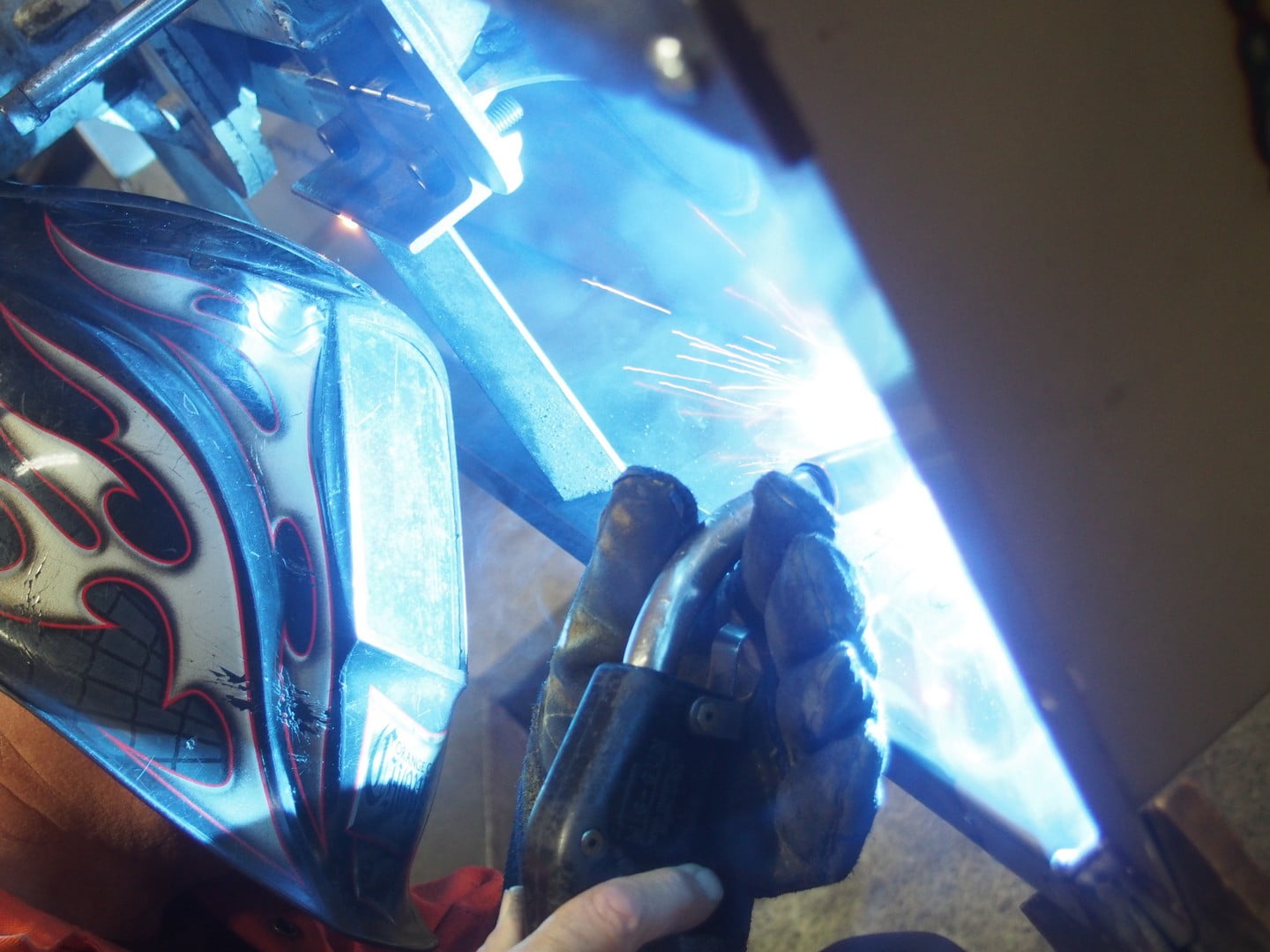Stainless Steel MIG Welding
Welding stainless steel is a lot easier than welding aluminium, stainless steel still has properties that vary from other steels, requiring specific welding processes and techniques to achieve a strong, durable and attractive weld.
There are 3 common options for MIG welding stainless steel:
- Spray-arc
- Short-circuiting
- Pulsed-arc transfer
In today’s blog post we’re going to cover off each type and the benefits and differences.
Spray-arc Transfer
An electrode diameter as great as 1.57mm, but commonly 1.14mm, 0.089mm, and 0.076mm, is used with high currents to create a spray-arc transfer. A current of approximately 300-350 amperes is required for a 1.57mm electrode, dependent on the shielding gas and type of stainless steel wire being utilised. The degree of spatter varies depending upon the composition and flow rate of the shielding gas, wire feed speed, and characteristics of the welding power supply.
Direct Current Electrode Positive (DCEP) is used for most stainless-steel welding. An argon-oxygen mix of 1% or 2% is recommended for most stainless steel spray arc welding.
On square butt welds, a backup strip should be used to prevent weld metal drop through. In situations where the fit up is low quality or copper backing can’t be used, drop through may be minimised by short-circuit welding the first pass.
Forehand techniques are beneficial when choosing to weld with a semiautomatic gun. This opens up a greater risk of the operator’s hand being exposed to more heat, however the payoff for that is increased visibility.
For welding plate steel 6.35mm and thicker, the weld gun should be moved back and forth in the direction of the joint and simultaneously moved slightly from side to side. On thinner metal, only the back and forth motion along the joint is required.
The more economical short-circuiting transfer process for thinner stainless steel should be used in the overhead and horizontal position for at the very least the root and first passes of the gun. Although some weld operators use a short digging spray arc to control the puddle, the weld is likely to be unduly porous.¹
Short-Circuit Transfer
Power supplies with slope, voltage, and inductance controls are highly recommended for the welding of stainless steel using short-circuiting transfer technique. Inductance play a particularly important part in obtaining correct puddle fluidity.
The shielding gas recommended for short-circuit welding of stainless consists of:
- 90% Helium
- 7.5% Argon
- 2.5% Carbon Dioxide
The gas gives the best bead contour while keeping the CO2 level low enough so it doesn’t affect the corrosion resistance of the stainless steel. High inductance in the output is beneficial when using this particular gas mixture.
Single-pass welds may also be made by using an argon/CO2 gas, however CO2 in the shielding gas will affect the corrosion resistance of multipass welds made with short-circuiting transfer.
Wire extension, or stick out, should be kept as short as possible. Backhand welding is usually easier on fillet welds and will result in a neater weld. Forehand welding should be used for butt welds. Outside corner welds may be made with a straight motion. A slight backward and forward motion along the axis of the joint should be used. Good corrosion resistance for short circuit transfer welds on stainless steel can be made with a shield gas consisting of:
- 90% Helium
- 7%-1/2% Argon
- 2%-1/2% CO2
Butt welds, lap welds, and single fillet welds in material ranging from 15.24mm to 3.175mm in stainless steel grades 321, 310, 316, 304 and similar can also be successfully made.
Pulsed-Arc Transfer
Pulsed arc transfer process usually uses one drop of molten metal transferred across the arc for each high current pulse of weld current. The high current pulse must be of sufficient magnitude and duration to cause at least one small drop of molten metal to form then be propelled by the pinch effect from the end of the wire to the weld puddle.
During the low current portion of the weld cycle the arc is maintained and the wire is heated, but the heat produced during this phase is not high enough to transfer metal. Due to this, the duration of the low current value must be limited otherwise metal could be transferred during the globular mode.
Wire diameters of:
- 0.76mm
- 0.89mm
- 1.14mm
are most commonly used with this process.
Gases for pulsed arc welding are the same as for spray arc: Argon plus 1% Oxygen. These and other wire gauges can be welded in the spray transfer mode at lower average current with pulsed current rather than with continuous weld current. The key benefit of this being thin material can be welded in the spray transfer mode which produces a smooth weld with less spatter than the short circuiting mode.
Other benefits include:
- Spray transfer can be obtained with a larger wire
- Larger diameter wires are cheaper
- Lower ratio of surface to volume reduces the possibility of weld contamination from surface oxides
- Pulsed MIG welding characteristics are excellent with lower currents
There are myriad advantages with the process including low spatter, penetration without melt-through and excellent operator appeal.
Summary
Today we’ve covered the 3 primary methods of welding stainless steel. If you’ve got a stainless project you’d like advice on, contact our experienced team today, who offer end-to-end steel fabrication and delivery services from southern Sydney.
References and adaptation from: https://www.lincolnelectric.com/en-us/support/process-and-theory/Pages/mig-welding-stainless-detail.aspx accessed Thursday 22 December 2022.

